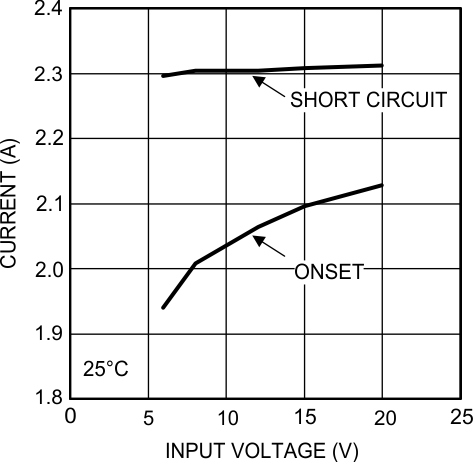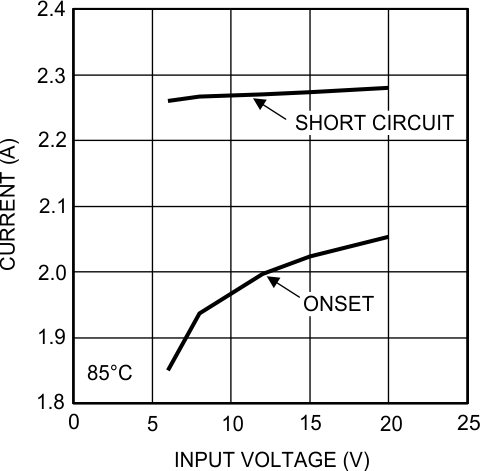SNVS651H January 2010 – August 2015 LMZ12001
PRODUCTION DATA.
- 1 Features
- 2 Applications
- 3 Description
- 4 Revision History
- 5 Pin Configuration and Functions
- 6 Specifications
- 7 Detailed Description
- 8 Application and Implementation
- 9 Power Supply Recommendations
- 10Layout
- 11Device and Documentation Support
- 12Mechanical, Packaging, and Orderable Information
6 Specifications
6.1 Absolute Maximum Ratings
over operating free-air temperature range (unless otherwise noted) (1)(2)(3)| MIN | MAX | UNIT | ||
|---|---|---|---|---|
| VIN, RON to GND | –0.3 | 25 | V | |
| EN, FB, SS to GND | –0.3 | 7 | V | |
| Junction Temperature | 150 | °C | ||
| Peak Reflow Case Temperature (30 sec) | 245 | °C | ||
| Storage Temperature, Tstg | –65 | 150 | °C | |
(1) Stresses beyond those listed under Absolute Maximum Ratings may cause permanent damage to the device. These are stress ratings only, which do not imply functional operation of the device at these or any other conditions beyond those indicated under Recommended Operating Conditions. Exposure to absolute-maximum-rated conditions for extended periods may affect device reliability.
(2) If Military/Aerospace specified devices are required, please contact the Texas Instruments Sales Office/ Distributors for availability and specifications.
(3) For soldering specifications, refer to the following document: SNOA549
6.2 ESD Ratings
| VALUE | UNIT | |||
|---|---|---|---|---|
| V(ESD) | Electrostatic discharge | Human body model (HBM), per ANSI/ESDA/JEDEC JS-001(1) | ±2000 | V |
(1) JEDEC document JEP155 states that 500-V HBM allows safe manufacturing with a standard ESD control process.
6.3 Recommended Operating Conditions
over operating free-air temperature range (unless otherwise noted)| MIN | MAX | UNIT | ||
|---|---|---|---|---|
| VIN | 4.5 | 20 | V | |
| EN | 0 | 6.5 | V | |
| Operation junction temperature | –40 | 125 | °C | |
6.4 Thermal Information
| THERMAL METRIC(1) | LMZ12001 | UNIT | ||
|---|---|---|---|---|
| NDW | ||||
| 7 PINS | ||||
| RθJA | Junction-to-ambient thermal resistance | 4-layer JEDEC Printed-Circuit-Board, No air flow | 19.3 | °C/W |
| 2-layer JEDEC Printed-Circuit-Board, No air flow | 21.5 | |||
| RθJC(top) | Junction-to-case (top) thermal resistance | 1.9 | °C/W | |
(1) For more information about traditional and new thermal metrics, see the Semiconductor and IC Package Thermal Metrics application report, SPRA953.
6.5 Electrical Characteristics
Limits in standard type are for TJ = 25°C unless otherwise specified. Minimum and Maximum limits are specified through test, design or statistical correlation. Typical values represent the most likely parametric norm at TJ = 25°C, and are provided for reference purposes only. Unless otherwise stated the following conditions apply: VIN = 12 V, VOUT = 1.8 V(3).| PARAMETER | TEST CONDITIONS | MIN(1) | TYP(2) | MAX(1) | UNIT | ||
|---|---|---|---|---|---|---|---|
| SYSTEM PARAMETERS | |||||||
| ENABLE CONTROL | |||||||
| VEN | EN threshold trip point | VEN rising | 1.18 | V | |||
| apply over the junction temperature (TJ) range of –40°C to +125°C | 1.1 | 1.25 | |||||
| VEN-HYS | EN threshold hysteresis | VEN falling | 90 | mV | |||
| SOFT-START | |||||||
| ISS | SS source current | VSS = 0 V | 8 | µA | |||
| apply over the junction temperature (TJ) range of –40°C to +125°C | 5 | 11 | |||||
| ISS-DIS | SS discharge current | –200 | µA | ||||
| CURRENT LIMIT | |||||||
| ICL | Current limit threshold | DC average | 2 | A | |||
| apply over the junction temperature (TJ) range of –40°C to +125°C | 1.4 | 3 | |||||
| ON/OFF TIMER | |||||||
| tON-MIN | ON timer minimum pulse width | 150 | ns | ||||
| tOFF | OFF timer pulse width | 260 | ns | ||||
| REGULATION AND OVERVOLTAGE COMPARATOR | |||||||
| VFB | In-regulation feedback voltage | VSS >+ 0.8 V TJ = -40°C to 125°C IO = 1 A |
0.798 | V | |||
| apply over the junction temperature (TJ) range of –40°C to +125°C | 0.777 | 0.818 | |||||
| VSS >+ 0.8 V TJ = 25°C IO = 10 mA |
0.786 | 0.802 | 0.818 | ||||
| VFB-OV | Feedback overvoltage protection threshold | 0.92 | V | ||||
| IFB | Feedback input bias current | 5 | nA | ||||
| IQ | Non-switching input current | VFB= 0.86 V | 1 | mA | |||
| ISD | Shutdown quiescent current | VEN= 0 V | 25 | μA | |||
| THERMAL CHARACTERISTICS(4) | |||||||
| TSD | Thermal shutdown | Rising | 165 | °C | |||
| TSD-HYST | Thermal shutdown hysteresis | Falling | 15 | °C | |||
| PERFORMANCE PARAMETERS | |||||||
| ΔVO | Output voltage ripple | 8 | mV PP | ||||
| ΔVO/ΔVIN | Line regulation | VIN = 8 V to 20 V, IO= 1 A | 0.01% | ||||
| ΔVO/ΔVIN | Load regulation | VIN = 12 V | 1.5 | mV/A | |||
| η | Efficiency | VIN = 12 V, VO = 1.8 V, IO = 1 A | 85% | ||||
(1) Minimum and Maximum limits are 100% production tested at 25°C. Limits over the operating temperature range are specified through correlation using Statistical Quality Control (SQC) methods. Limits are used to calculate Average Outgoing Quality Level (AOQL).
(2) Typical numbers are at 25°C and represent the most likely parametric norm.
(3) EN 55022:2006, +A1:2007, FCC Part 15 Subpart B: 2007. See AN-2024 and layout for information on device under test.
6.6 Typical Characteristics
Unless otherwise specified, the following conditions apply: VIN = 12 V; CIN = 10-µF X7R Ceramic; CO = 100-µF X7R Ceramic; TA = 25 C for efficiency curves and waveforms.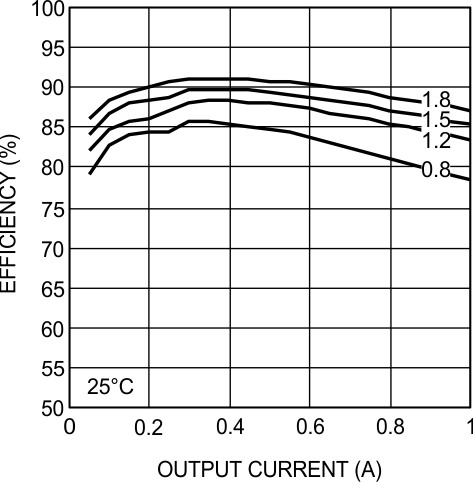
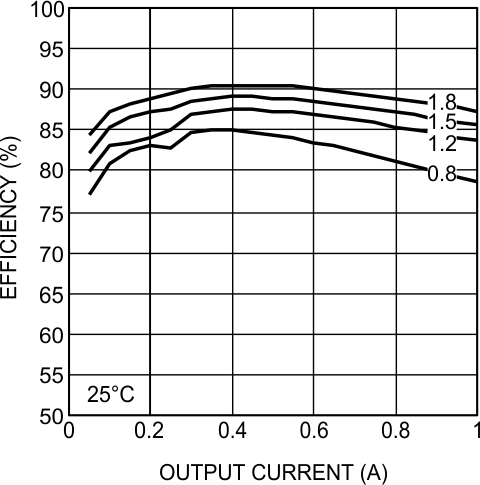
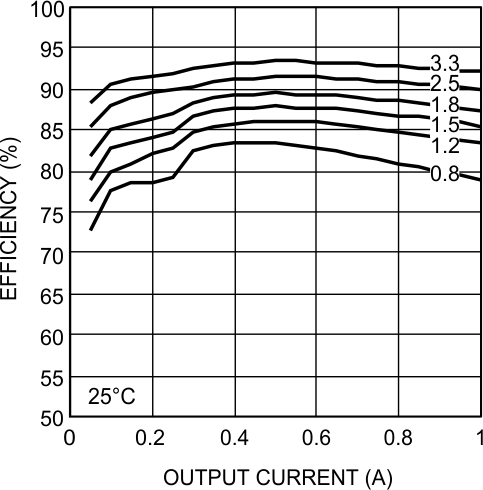
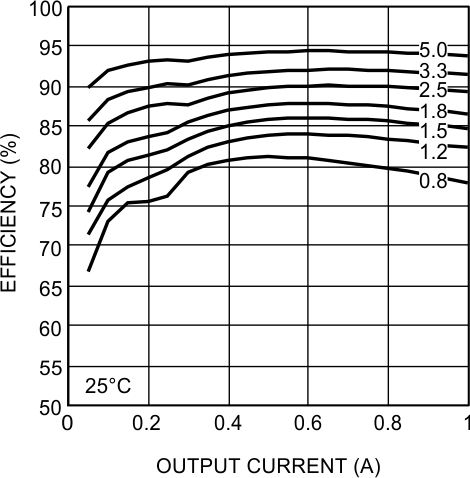
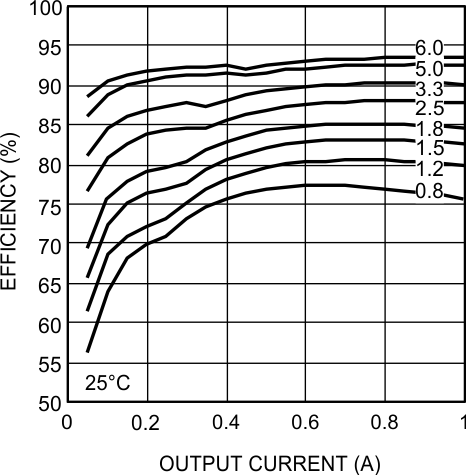
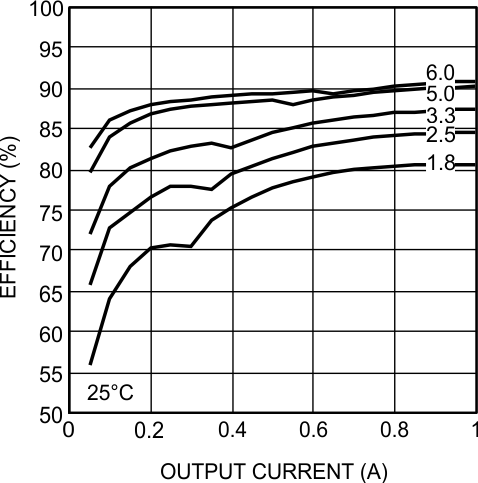
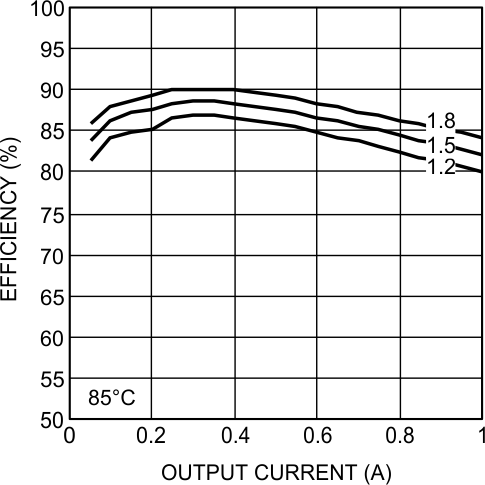
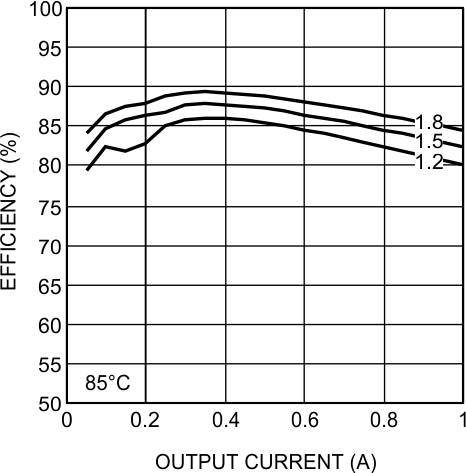
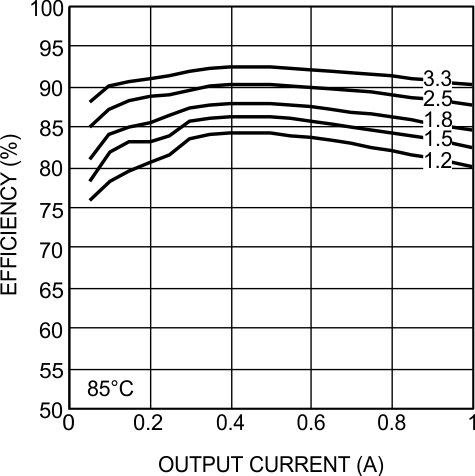
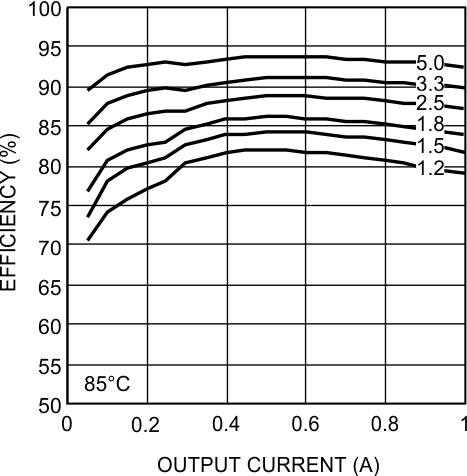
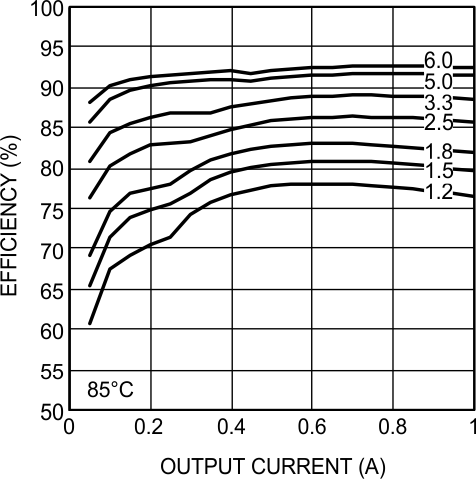
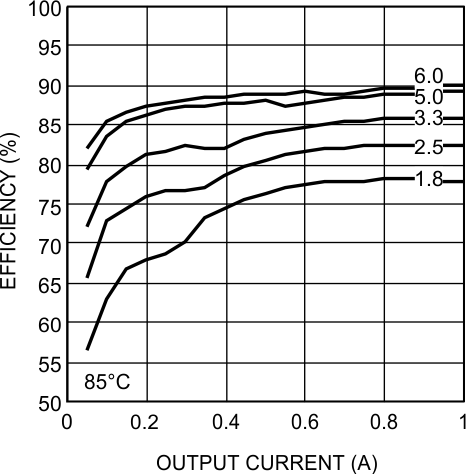
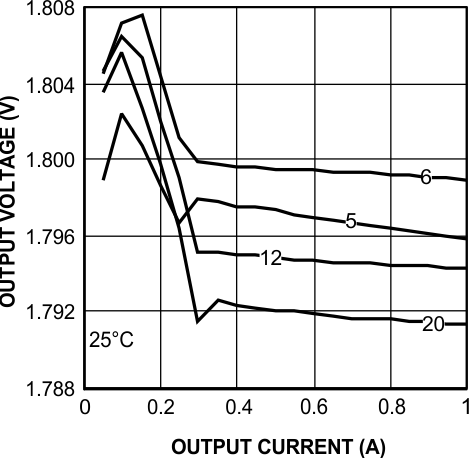
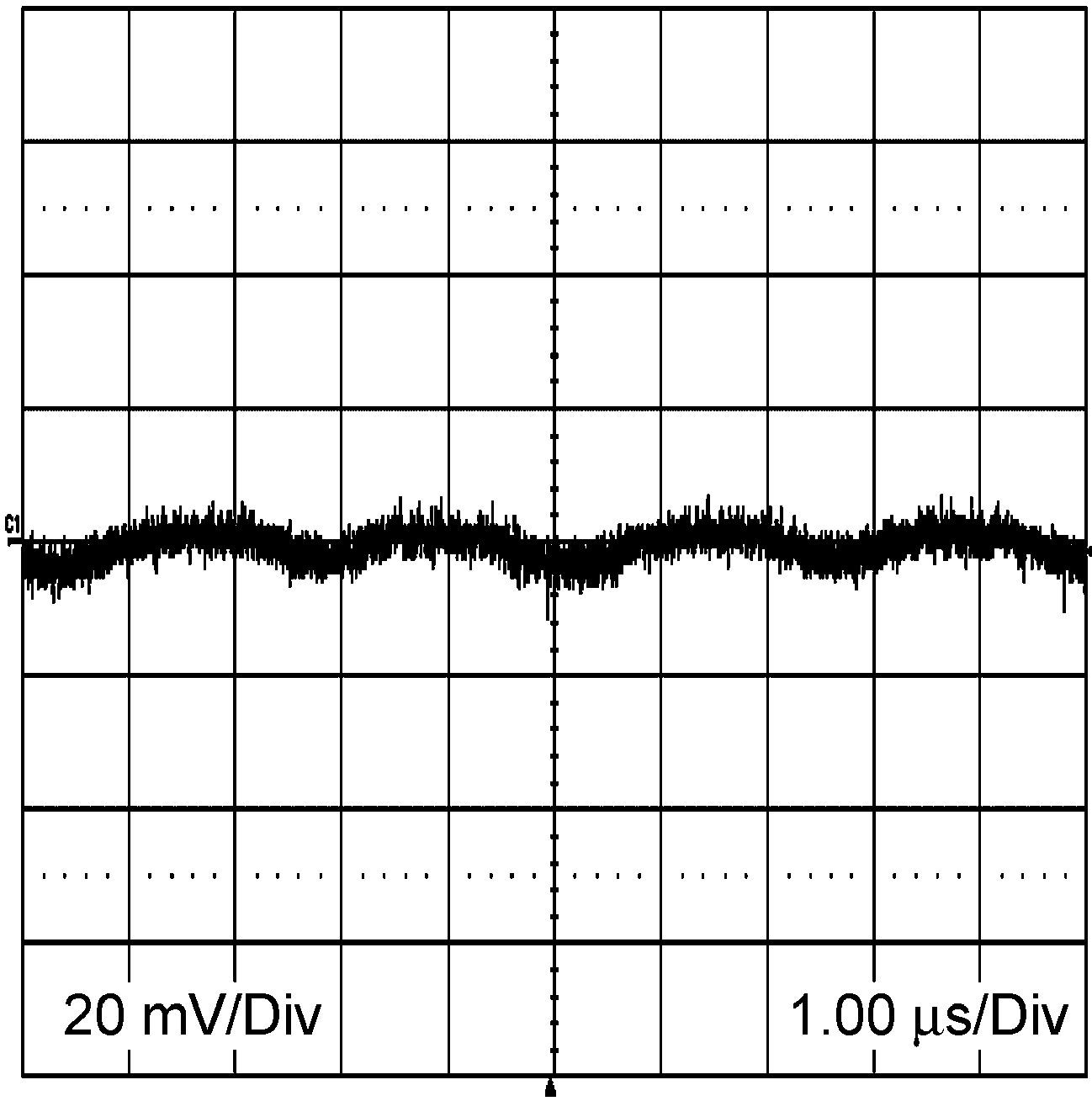
12 VIN 3.3 VO 1 A
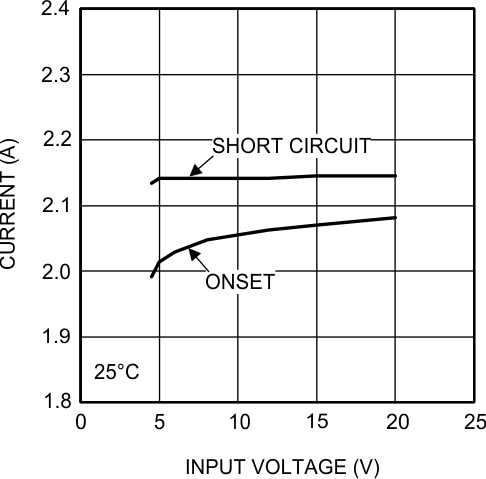
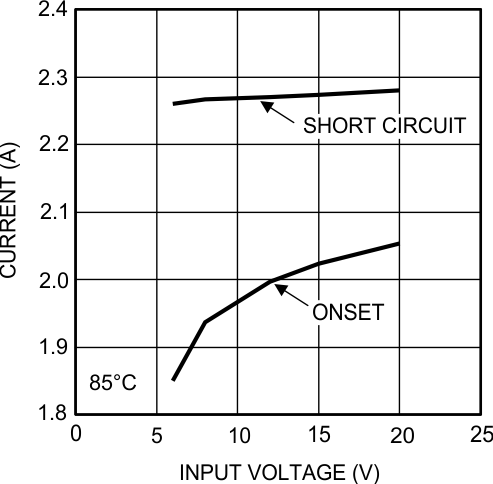
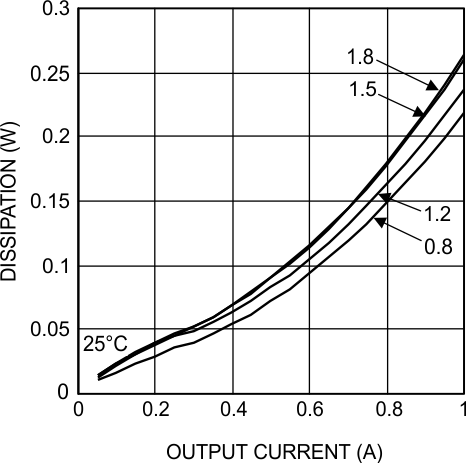
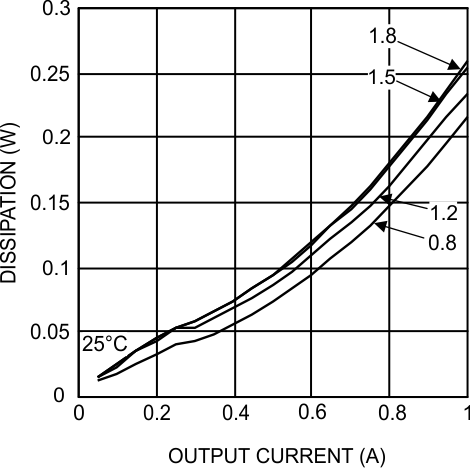
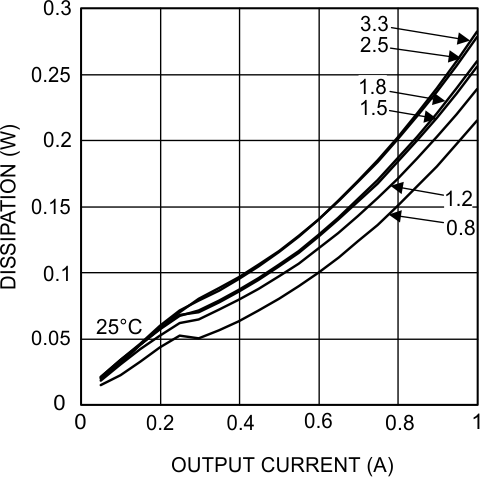
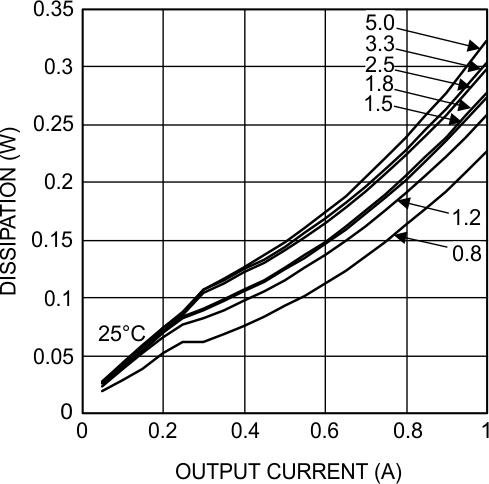
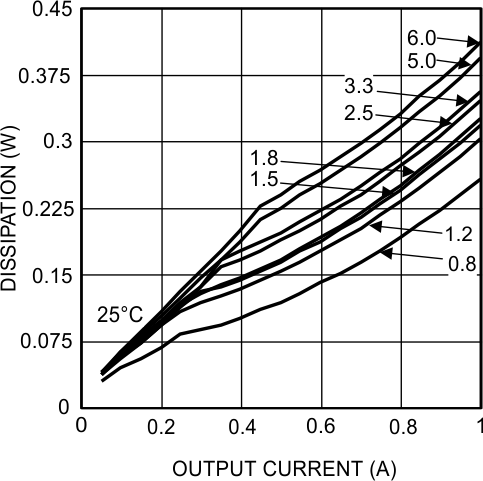
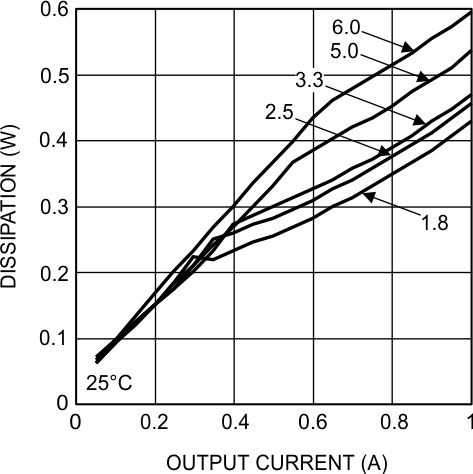
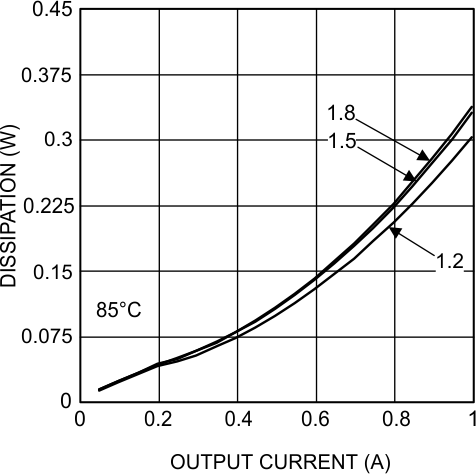
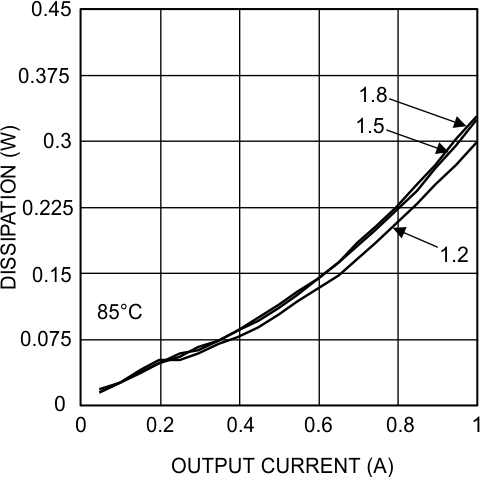
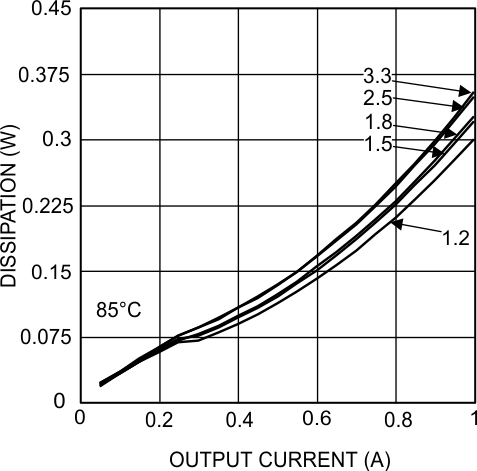
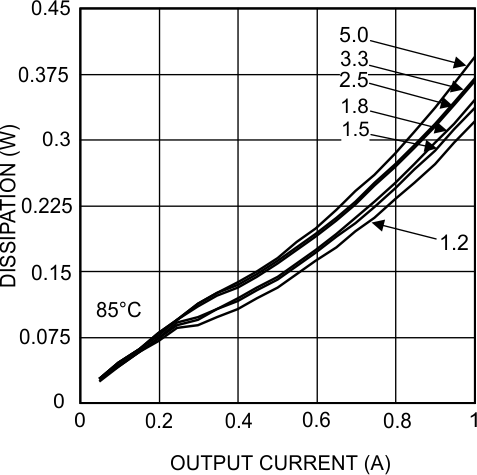
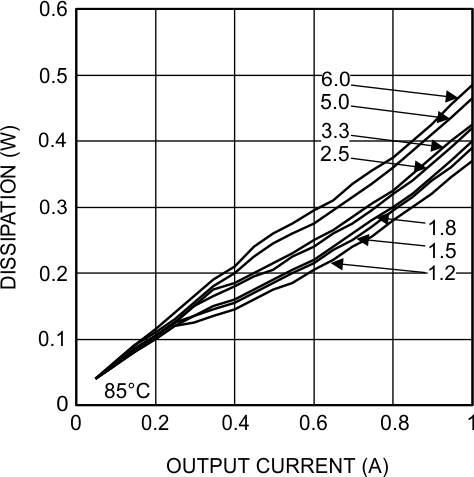
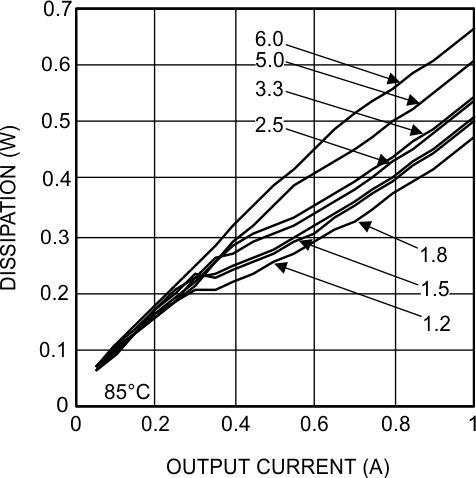
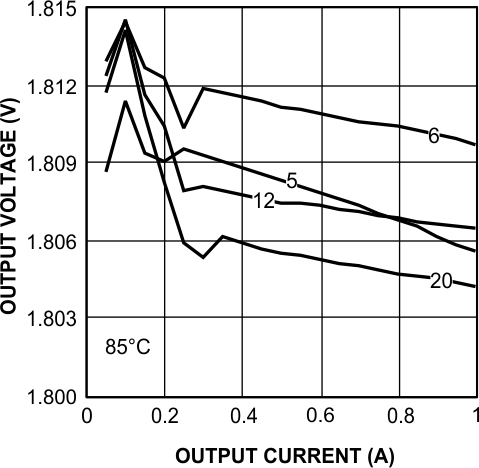
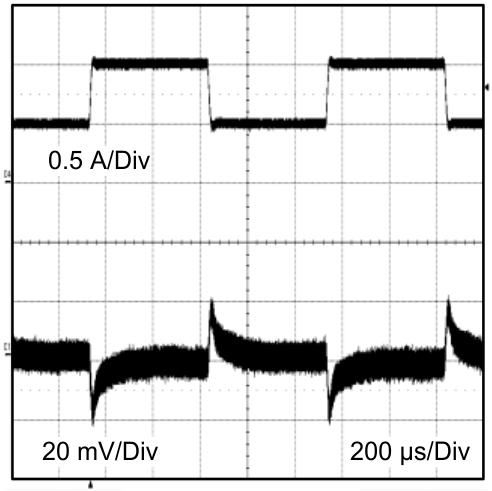
12 VIN 3.3 VO 0.6-A to 1-A Step
